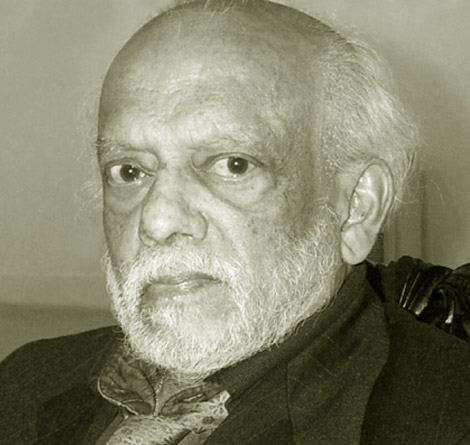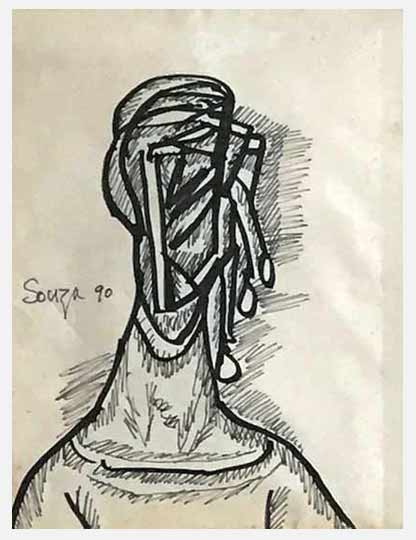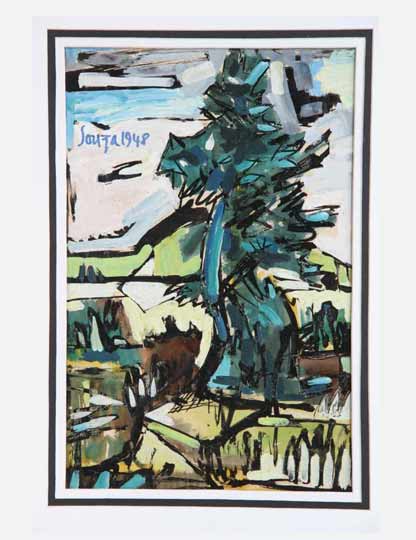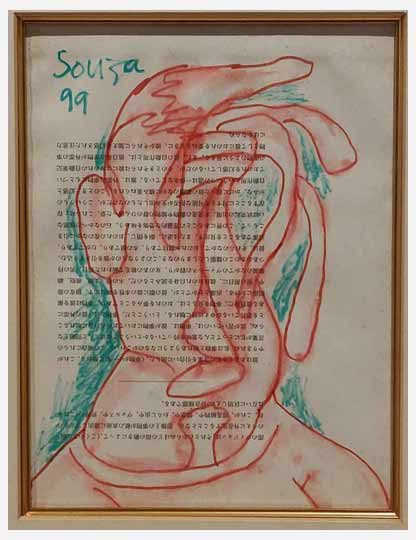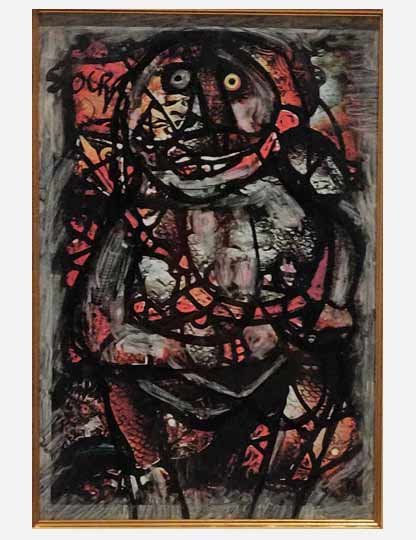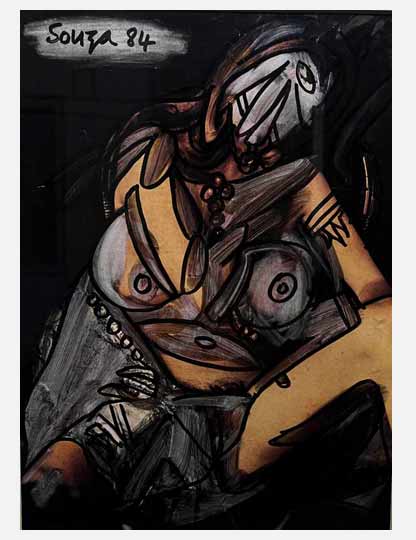Francis Newton Souza
Francis Newton Souza, born on April 24, 1924, in Goa, was a founding member of the Progressive Artists’ Group in Bombay, and a leading member of the Indian avant-garde. Born in Portuguese-controlled Goa, Souza moved to London after the Indian Independence to cement his international reputation as an artist and became one of the first post-Independence Indian painters to gain recognition in the West. His work is characterized by Expressionist and Art Brut influences and features thick swaths of luminous colour, which give his paintings an animated quality.
The subjects of Souza’s paintings range from icons of Christianity, still life, landscapes, nudes, etc. The man-woman relationship, the sexual tensions, and conflicts between them is a recurrent theme. His figures are not aesthetically attractive. Souza has distorted them intentionally, expressing his impatience and defiance at a convention. By the decade of the ’50s, Souza’s signature male head had made its appearance and was used over and over again signifying the inherent evil and cruelty which is a part of human nature. His style of painting was unrestrained but there is a noticeable influence of the folk art of Goa, the Renaissance paintings, the Catholic Churches, landscapes of the 18th and 19th century, European Art, and modernism.
Souza’s work is in the collections of the Tate Gallery in London, the National Gallery of Modern Art in New Delhi, and the National Gallery of Victoria in Melbourne, Australia. Though he spent most of his life after 1967 in New York, Souza died March 28, 2002, in Mumbai, India.
